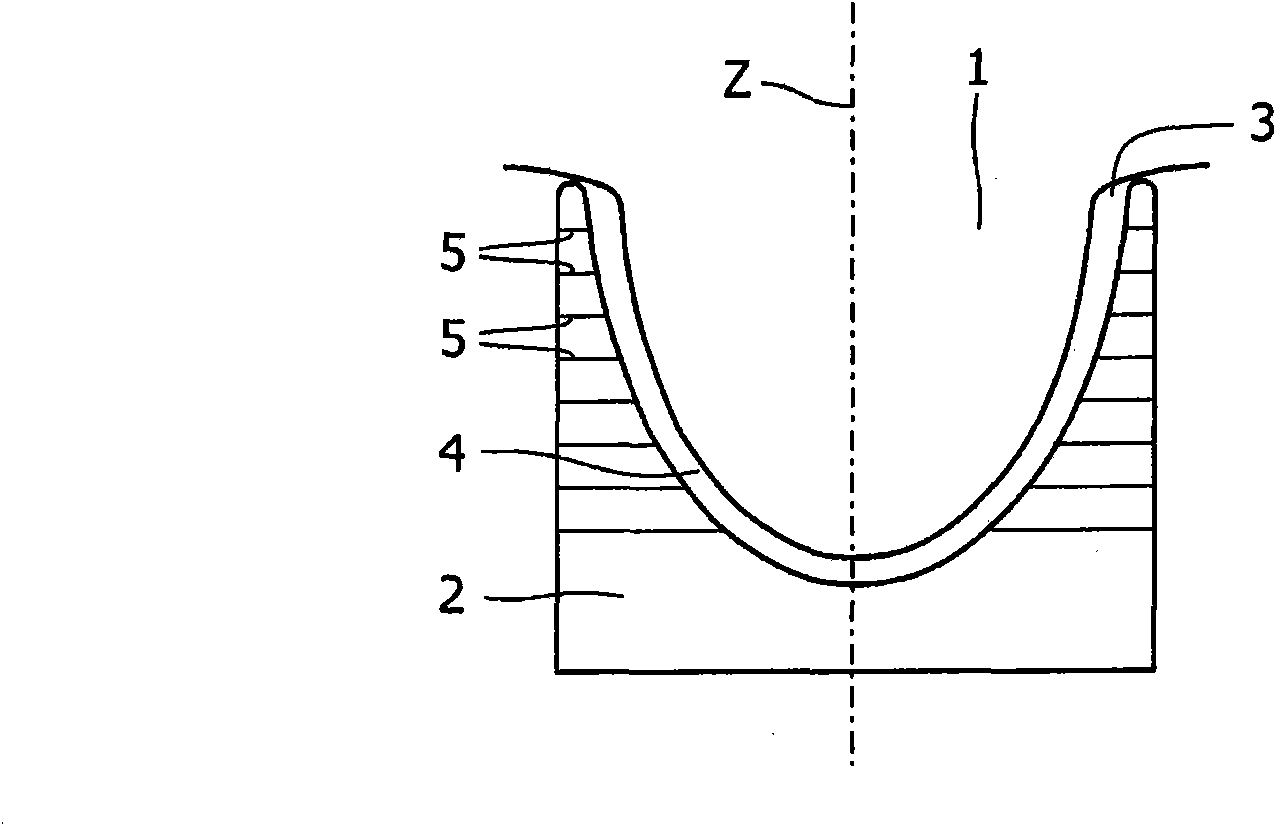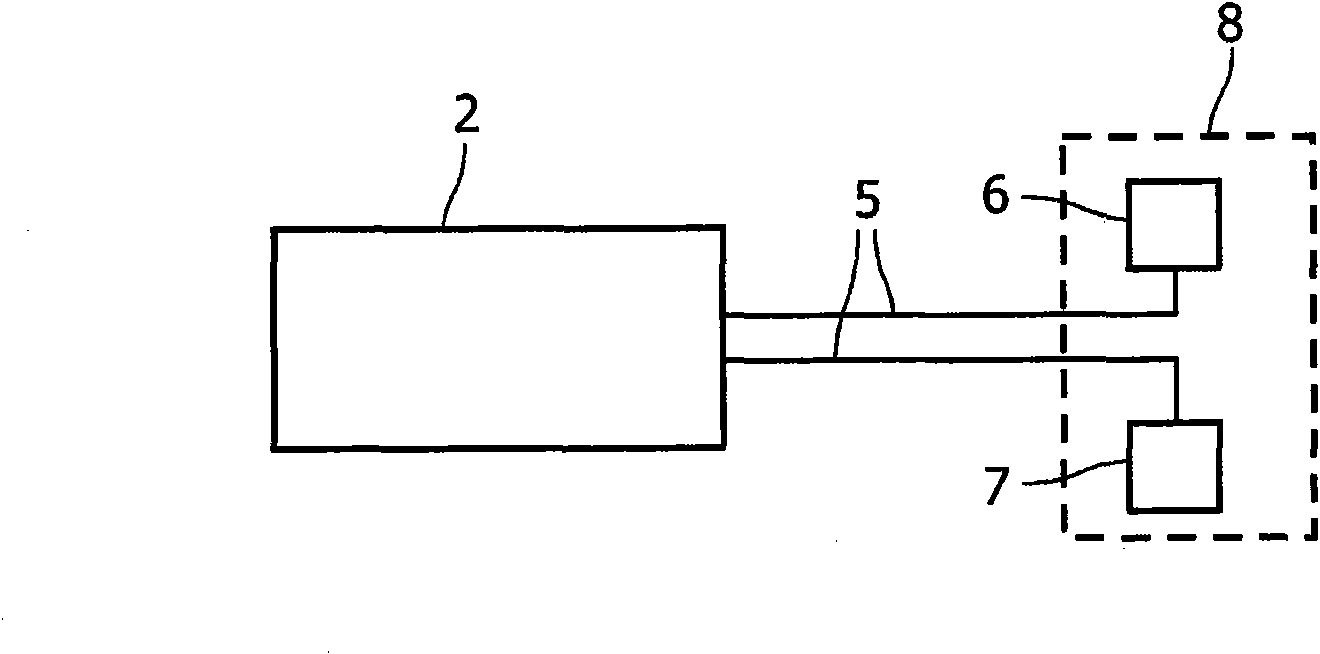Method for reconstructing a fluorescent image of the interior of a turbid medium and device for imaging the interior of a turbid medium
A fluorescence image, turbidity technique, applied in fluorescence/phosphorescence, application, material analysis by optical means, etc., can solve problems such as unsatisfactory determination of fluorescent contrast agent concentration
- Summary
- Abstract
- Description
- Claims
- Application Information
AI Technical Summary
Problems solved by technology
Method used
Image
Examples
no. 1 example
[0021] will now refer to figure 1 and figure 2 Embodiments of the present invention are described. The device for imaging the interior of a turbid medium according to this embodiment is a device for diffuse optical tomography (DOT). In particular, the device is suitable for examining female breasts. The overall construction of such devices is known in the art. The apparatus includes a bed (not shown) on which the individual to be examined lies in a prone position. An opening is formed in the bed, beneath which the measuring body 4 extends. figure 1 The measuring body 4 is shown in .
[0022] exist figure 1 In the device shown, the turbid medium 1 to be examined is a female breast. The measuring body 4 is bounded by a receiving part 2 suitable for receiving the turbid medium 1, such as figure 1 shown schematically. The receiving part 2 has a cup-like shape and is provided with an opening 3 . Depend on figure 1 It can be seen that the turbid medium 1 to be examined is ...
no. 2 example
[0039] A second embodiment will be described below. The second embodiment basically corresponds to the first embodiment described above and differs only in that a fluorescent contrast agent is considered as one of the components, the concentration of which is determined from attenuation measurements in the second wavelength range. Therefore, according to the second embodiment, the self-absorption of fluorescence by the fluorescent contrast agent is taken into account. This leads to improved fluorescence images, especially in the case of high concentrations of fluorescent contrast agents.
[0040] According to a second embodiment, the concentration c of the fluorescent contrast agent f (r) and its absorption coefficient μ af contained in the equation , that is, the term c is considered in the summation f (r)μ af (λ, r). Thus, the concentration of the fluorescent contrast agent has been (pre)calculated from the decay measurements. The absorption characteristic for the fi...
PUM
 Login to View More
Login to View More Abstract
Description
Claims
Application Information
 Login to View More
Login to View More - R&D
- Intellectual Property
- Life Sciences
- Materials
- Tech Scout
- Unparalleled Data Quality
- Higher Quality Content
- 60% Fewer Hallucinations
Browse by: Latest US Patents, China's latest patents, Technical Efficacy Thesaurus, Application Domain, Technology Topic, Popular Technical Reports.
© 2025 PatSnap. All rights reserved.Legal|Privacy policy|Modern Slavery Act Transparency Statement|Sitemap|About US| Contact US: help@patsnap.com



